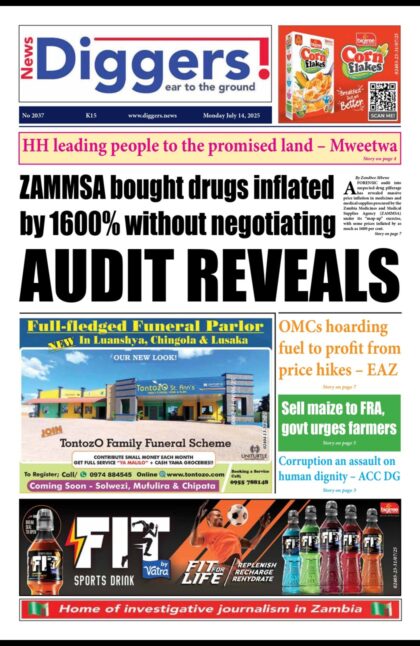INTEREST rates on loan facilities increased to an average 28 per cent by the end of last year from 26.1 per cent by September 30, 2019, reflecting elevated government financing needs and tight liquidity conditions.
And Bank of Zambia (BoZ) data reveals that growth of domestic credit to the private sector leaped to 17.2 per cent by the end of last year from 8.2 per cent in the previous quarter, mainly triggered by government’s delayed payments for goods and services supplied to it.
Meanwhile, Zambia’s international gross reserves marginally dropped to US $1.45 billion by the end of 2019, although representing 2.1 months of import cover from US $1.48 billion by September 30, 2019.
According to BoZ data shared following the Monetary Policy Rate (MPR) announcement in Lusaka, Wednesday, the increment in the average lending rate represents nearly two percentage points during the period under review, slightly more than the increase in the MPR of 1.25 per cent effected by the BoZ last November.
BoZ governor Dr Denny Kalyalya told journalists at the central bank in Lusaka that the rise in average lending rates on commercial banks’ loan facilities reflected elevated government financing needs amidst tight liquidity conditions.
“The average lending rate had been coming down, but it has persistently gone up since 2018. Interest rates continued to rise as liquidity conditions tightened. This largely reflected government financing requirements, which kept yield rates high. The commercial banks’ average lending rate increased to 28 per cent in December, 2019, from 26.1 per cent in September,” Dr Kalyalya said.
And Dr Kalyala said growth of domestic credit to the private sector jumped to 17.2 per cent by the end of last year from 8.2 per cent in the previous quarter, more than double, mainly triggered by government’s delayed payments for goods and services they were supplied with.
“On domestic credit, we see a bit of a pick-up in total credit in nominal terms, growth of credit to the private sector rose to 17.2 per cent in the fourth quarter from 8.2 per cent in the third quarter. But this growth didn’t take the form of the ordinary lending, but it was these securities, which were placed in the securities market,” he said.
“The increase in credit growth to the private sector was driven by high demand for working capital by firms to bridge the liquidity gap created by delayed payment for goods and services supplied to government. Credit to government also grew to 17.2 per cent from 10.8 per cent, mainly in form of government securities to meet financing needs.”
Data also showed that although money supply in the local economy also grew, it was mainly driven by the expansion in domestic credit to government.
Meanwhile, Zambia’s international gross reserves marginally dropped to US $1.45 billion by the end of 2019, although representing 2.1 months of import cover from US $1.48 billion by September 30, 2019, or around 1.8 months of import cover.
Dr Kalyalya, however, explained that projected imports had decreased, but for the same quantum of reserves, which explained the elevated import cover over the two periods under review.
“…In terms of import cover, it’s a different story: in September, that US $1.48 billion represented 1.8 months of import cover. So, people have asked the question: ‘how is it that your reserves have come down, but your import cover has gone up?’ It is simply the fact that, when we looked at the projected imports of goods and services, factoring imports in the period ahead, they have come down. So, you divide that into the reserves, that’s how you get your 2.1. If you just looked at the import cover, you would see that there’s an improvement, but it’s for a smaller volume of imports, that’s the explanation. So, we hope this clarifies that issue,” said Dr Kalyalya.
“So, it’s the projected imports, which have gone down. So, for the same quantum of reserves, you are going to end up with a higher import cover.”
The central bank purchased a net amount of US $812 million last year to beef up the country’s reserves of which US $285 million were mineral royalties, according to BoZ data.
This is up from a total of US $510 million that was purchased in 2018, which included mineral royalties of US $164 million.



















